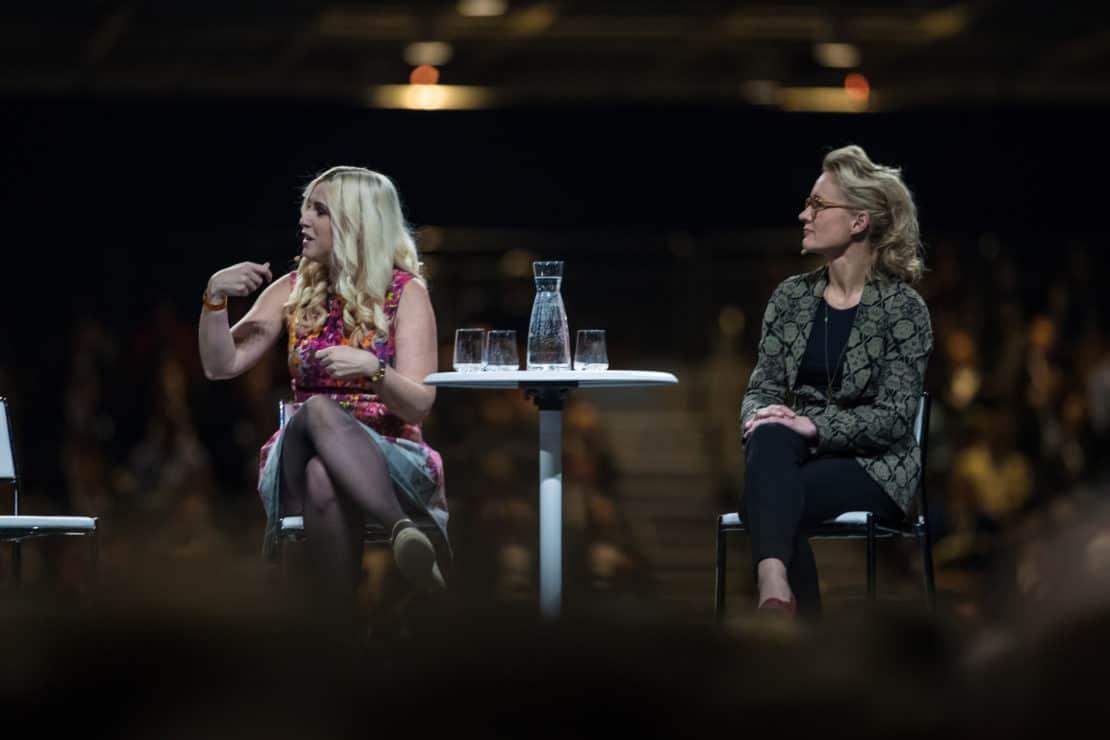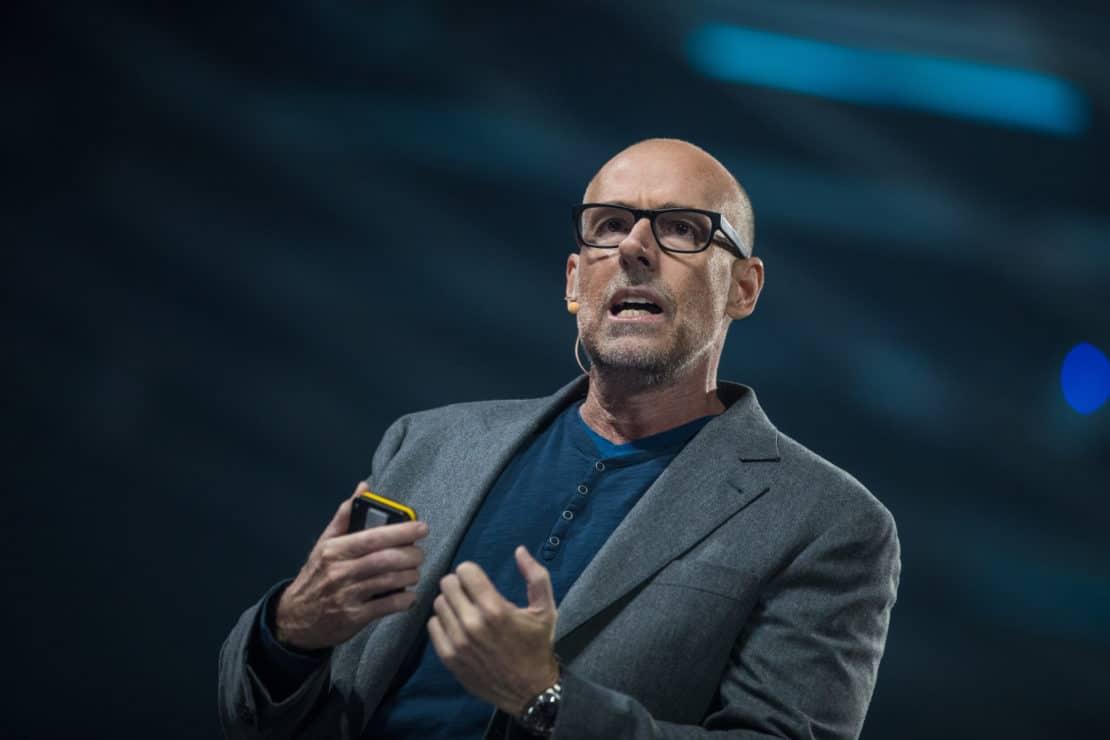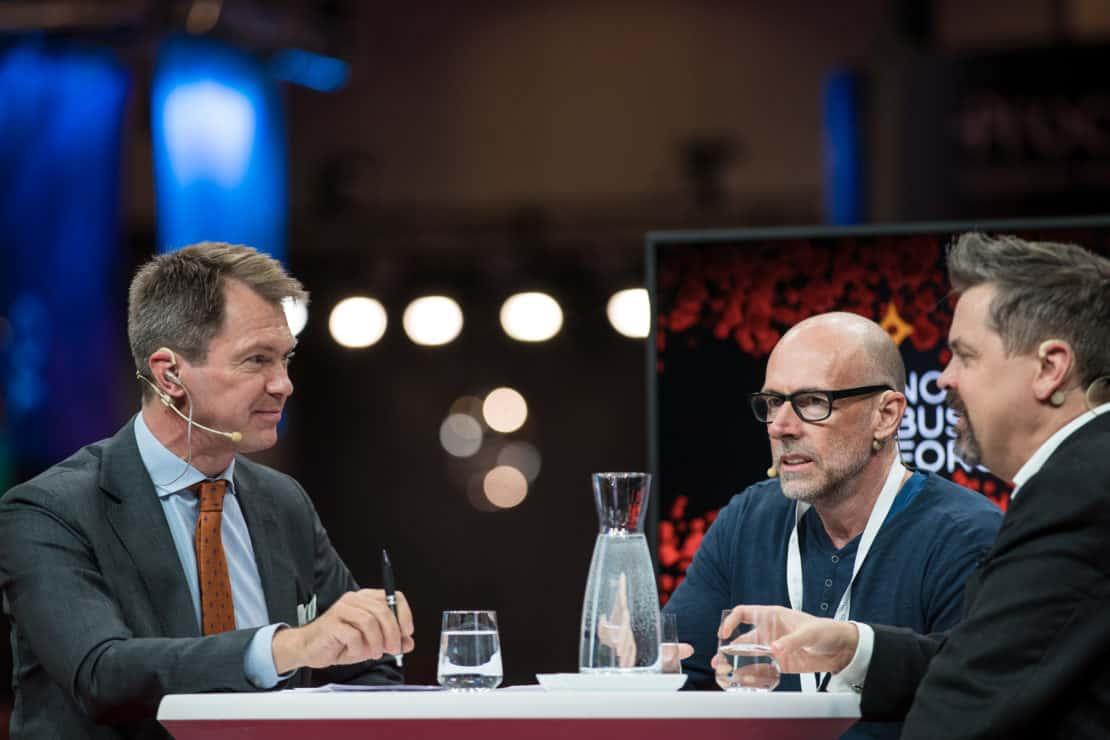6Oct2016
Media in the Nordics isn’t dead, but companies in the industry will have to find ways to navigate the digital disruptions taking place. That’s the view of two women titans operating in the Nordic media landscape as they engaged in public navel-gazing during a Nordic Business Forum hot seat session pondering the question, “Are we dead?”
Finnish academic and thought leader Alf Rehn led the spirited discussion with Bonnier Media’s Head of Digital Frida Boisen and Pia Kalsta, chief executive of Sanoma Media.
Perhaps fittingly, the sparring session followed Scott Galloway’s passionate thesis outlining the death of the advertising industrial complex. Because advertising is the fuel that drives the media industry – whether print or digital – in an economy that’s in the throes of transformation.
According to Galloway, media advertising is dying and the last one out turns off the lights. But it’s not all bad said Bonnier’s Frida Boisen. In fact, now’s the time for naked advertising, she suggested – the kind where advertisers get out of the way and leave storytellers and influencers to get on with the work of telling compelling narratives. This is ultimately the best currency for advertisers in a transitioning market.
Sanoma’s Pia Kalsta said that Galloway’s message is relevant to Finland and the Nordics in terms of the broader global trends it references. She noted that television advertising is still dominant in the US. In the Nordics, however, a more balanced media mix has already existed for some time.
“What will remain constant is that marketeers will need great products and good stories to tell about the products,” Kalsta noted.
Nordic markets already digital
Boisen agreed, adding that Nordic markets are already highly oriented toward digital content. In Sweden, written communication is a second language, and video has evolved to become the new lingua franca, she said. This means that at Bonnier, content is always created with SEO and viral teams to ensure that it works with Google and FB.
“We have different strategies in the Bonnier Group. Expressen is all about video and is driving its own kind of advertising. But the banner ad is dying.”
Banner ads are indeed on their way out as consumers increasingly resort to ad-blockers, except in cases where they value free content to the extent that they are prepared to put up with advertising. This means that ads must become part of the experience and the storytelling, rather than a distraction.
Sanoma’s Kalsta pointed out that Google and Facebook won’t go away and the companies that can successfully redefine their roles in that digital ecosystem are the ones that will survive. On the other hand, Kalsta noted that advertisers will always follow consumers, so media companies need to keep customers and engagement at the heart of their advertising strategies.
Apart from the ascendance of video to become the de facto media language in Sweden, Boisen said that virtual technologies such as virtual and augmented reality are also poised to become part of the digital storytelling menu.
Pia Kalsta concurred but noted that one challenge that Finnish media companies face is finding ways to work together to raise the bar. It is dangerous to think that product is enough and does not require promotion and advertising, she warned.
Kalsta concluded that the media isn’t dead, because the consumer will ultimately make that decision. Consumers aren’t necessarily concerned with what’s old and what’s new, but what’s convenient. The media needs to be in that space, she declared.


